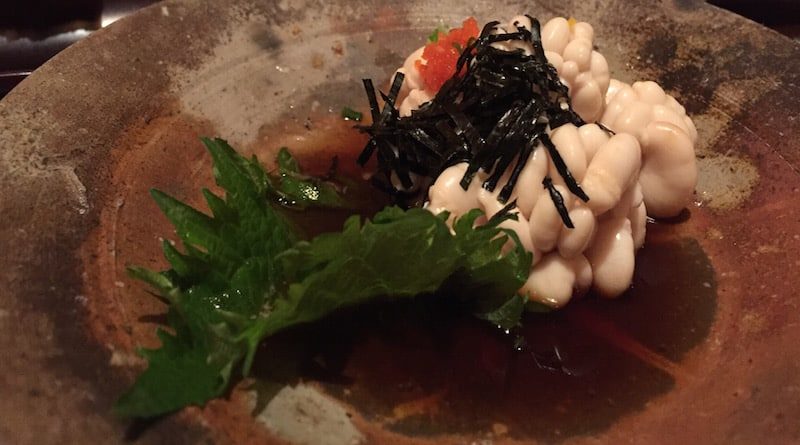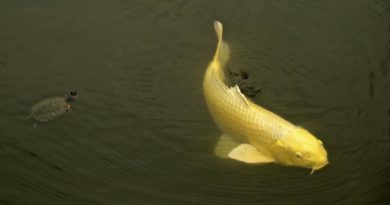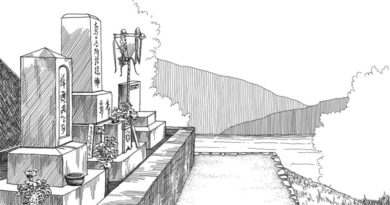A Short Season in a Hiroshima (that Never Was)
It’s springtime, and you’ve set your heart on Hiroshima, Queen of the Lemon Isles. Good for you! Let’s take a few moments to ensure you make the most of your time here. Ideally, you’ll begin by arranging transportation. Trains work, but can be limiting. Hovercraft, no. Taxis are a popular option, though you do hear unpleasant rumors. In the end, you’re probably best off walking. Most of the really good travel stories start with a sharp tug on the bootlaces, and that’s what we’re after.
You should arrive on a mild morning and supply the authorities with the necessary bribes. Looking around, you’ll find that others have come too. Take their photographs. If you like, you can ask them those 36 questions that are making the rounds recently, the ones meant to make strangers fall in love. Assuming you intend to fall in love with all of them (always the tactful choice), you should allow the better part of the morning, especially if you’ve fallen in with a chatty crowd.
And now you are smitten. Well done. It’s time for an adventure and luckily, as alive to the possibilities as you are, almost any experience will do. No need to overtax yourself this early in the game. The fact that you’re hungry simplifies things greatly. Lunch! Just don’t order the shirako. It’s chilled sperm, flayed from the loins of some hapless fish (if you’re protesting silently that fish have no loins, you’ve missed the point, specifically the cold bowl of fishy semen), which is more adventure than you want on your first turn out of the gate. Since you’re part of a group, and all of you very much in love, you can taste from one another’s plates. More photographs. That’s nice. These first hours are magic.
The guidebooks are spot-on about Miyajima. It’s wonderful. Again, walking is the best choice, at least until you come to the sea. Miyajima is an island, and in order to reach it you’ll need to seize the wrists and ankles of your new gang and form a human raft. The waters of the Seto Inland Sea are generally calm, and aside from the odd crab or inquisitive finless porpoise you shouldn’t have too much trouble from the wildlife. From Moto Ujina, prevailing springtime currents will likely carry you to Miyajima’s southern coast. Most of the famous World Heritage sights are on the far side of the island, but you’re fit, well-fed (one hopes) and by God you’re in love! A few quick photographs and off you run. Round to the right is probably best. If you choose to go the other way you’re walking straight into headhunter territory.
Strolling through Miyajima’s main population center you’ll find all sorts of souvenirs, from illustrated tea towels and bamboo whirligigs to shamoji, a type of wooden war club employed to lethal effect by the bands of female pirates who preyed on merchant shipping around the island until the early 1970s. Itsukushima Shrine itself is lovely, and you should avoid allowing yourself to be swept along by the crowd. Linger a little. If the mood seems right, lounge insouciantly against one of the red columns for a memorable photograph or two. If you’re lucky the tide will be in and the shrine will seem to float. Not enough to induce profound seasickness, but a bottle of cold ginger ale will be welcome. During the popular Namitobi Festival in late May, the entire shrine casts off from the island and is driven at high speeds up and down the coast while young men in bearskin robes waterski behind, slashing at one another with shamoji until a lone victor remains.
As the sun sets on the oyster-infested sea, you and your rabble of sweethearts find your way to the ferry terminal. On the northeastern horizon, the lights of Hiroshima beckon. It’s time for a night out, and in Hiroshima that means the entertainment district of Nagarekawa.
Nagarekawa means “flowing river,” a reference to the 1926 collapse of the district’s central shochu tank. In the ensuing tragedy, as much as 250 million gallons of shochu swept through the area, wetting several thousand people nearly to their knees. The only fatality was the beloved pet of a Shikoku showgirl named Shizuka. She had a shaggy Shetland sheepdog named Schatzi. The shochu was shallow, but Schatzi was short. She sheltered atop a shipment of schnapps, shivering. The schnapps shifted, and Schatzi shlipped. Er, slipped. Of course, if you’ve seen the film Schatzi: Song of My Heart, starring Richard Gere, none of this will be news to you.
And this is where we part. You’ll have to find your own way through to morning and start again. Good luck to you, to all of you. Send a postcard, care of this magazine, and let me know how it all turns out.





